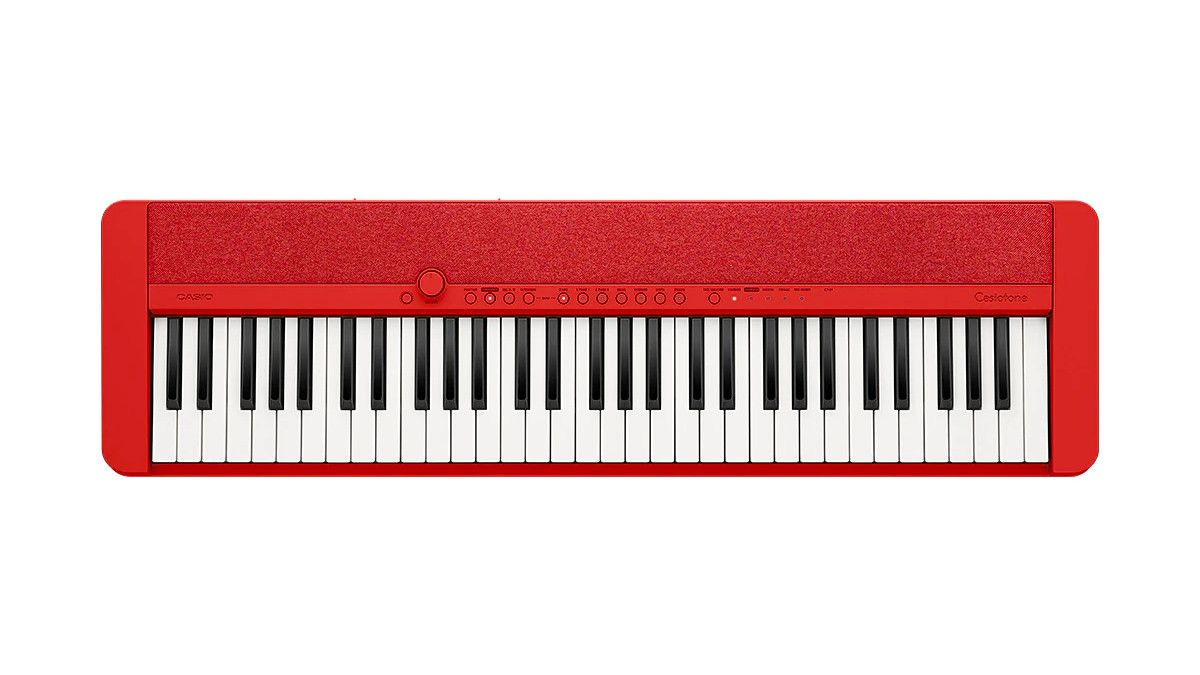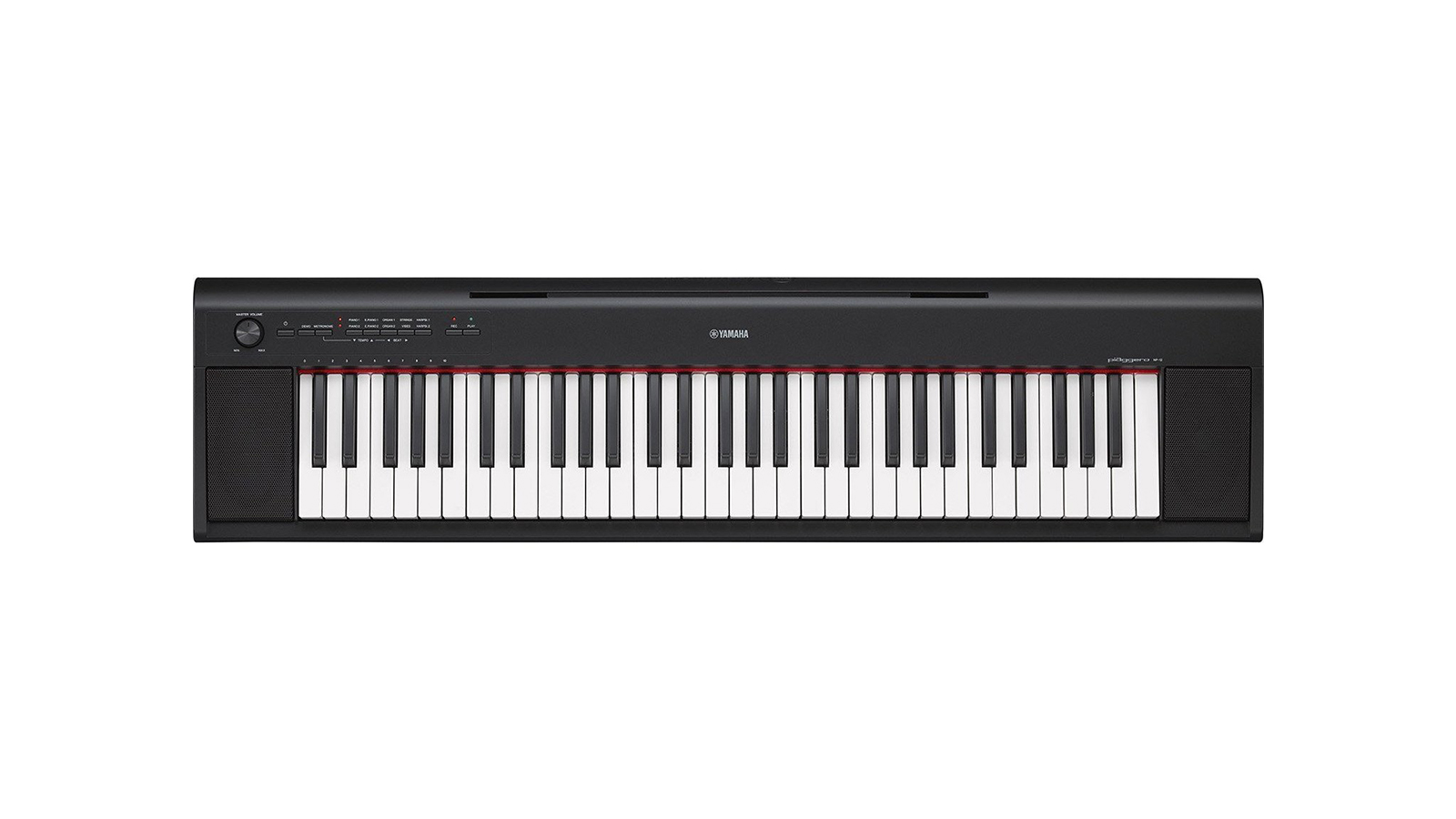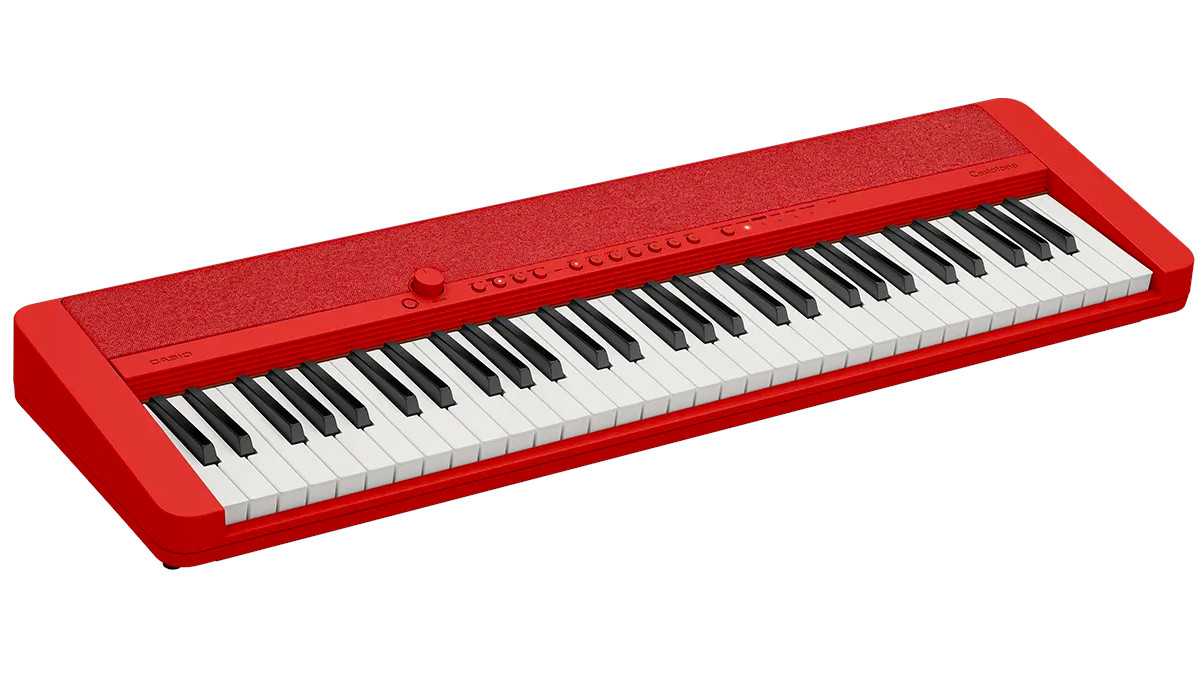MusicRadar Verdict
Pretty much the perfect beginner’s keyboard, the Casiotone CT-S1 offers great sounds and playability at a very competitive price.
Pros
- +
A wide selection of great sounds
- +
A very playable keyboard
- +
The speakers sound great
- +
It looks good - particularly the red version
- +
Super-portable
Cons
- -
Accessing some of the deeper features requires multiple button presses
- -
No 1/4-inch audio outputs
MusicRadar's got your back
What is it?
While it’s easy to delude yourself into thinking that high-end synths sit at the centre of the keyboard universe, the truth is that ‘home electronic keyboards’ and beginner digital pianos represent a much larger portion of the market.
Casio and its Casiotone brand are synonymous with this sector - indeed, they have been for the past four decades - and the CT-S1 is laser-targeted at the first-time buyer.
We should say immediately that this is no toy, though. In fact, the CT-S1 (available in black, white or - our pick of the bunch - red) is best thought of as a mini digital piano, albeit one with a much larger range of tones (61 are included in total).
Light and compact - and, undeniably, plastic - the CT-S1 can be powered by six AA batteries or the included mains adapter. Casio has certainly concerned itself with portability here; there’s built-in carry handle, and you can even attach a guitar strap so that the keyboard can become a quasi keytar.
The top panel includes a pair of 2.5W speakers that are covered in attractive fabric mesh, while connectivity includes a mini headphone/audio output, an audio input, a micro USB port for connection to a computer or other device, and a full-size USB port that can host the optional MIDI/audio Bluetooth dongle. A pedal jack input is included, too - you’ll most likely plug a sustain pedal in here.
There are 61 full-size, touch-sensitive keys that have a semi-weighted action, and you can adjust the touch response to suit your playing style.

Tone-wise, the piano is the headline act, but the unassuming top panel also contains dedicated sound selection buttons for two electric pianos, organ, ‘keyboard’ (the default is a harpsichord), synth and the mysterious ‘others’.
You can cycle through variations on each tone with repeated presses of the aptly named Tone Variation button, or select further tones (listed in the manual but not on the unit itself) with a combination of button and note presses. It’s possible to layer tones, too, and adjust the relative volume of the layers.
Other features include a MIDI song recorder, 24 types of reverb, EQ presets and a ‘surround’ feature for the built-in speakers (this doesn’t do anything when you’re using headphones). You can shift octaves, transpose and finetune the keyboard, and even select from alternate tuning presets.
Fortunately, your favourite setup can be saved for easy recall later on, as can your favourite tones.
Performance & Verdict
It might have a very competitive price tag, but any fears that the Casiotone CT-S1 is a ‘cheap’ keyboard are dispelled the moment you start playing it.
Right from the off, the tones are impressive, with the default stage piano being immensely playable and easily good enough to perform with.
It’s the same story with the vintage keyboards, organs, synths, strings and other sounds - you even get some classics from Casio’s older VL-Tone, CT, CZ and VZ synths.
We’re not going to run you through every tone that’s included, but we’re happy to report that Casio’s AiX sound engine really delivers the goods, providing pretty much everything you need and very little of what you don’t.
The keyboard itself is equally impressive. No, it doesn’t have a weighted hammer action, but it is smooth and reliable, and the velocity-sensitivity is something you won’t find on some cheaper models. If you’re at all serious about learning to play, it’s worth paying the extra to get it.

Yamaha Piaggero NP-12
Another decent option if you're looking for a piano-style entry-level keyboard, the NP-12 is lightweight and portable, and sounds great.
Roland GO:KEYS
Roland's take on the portable keyboard concept features 61 keys, more than 500 sounds, onboard Bluetooth and a Loop Mix feature.
And then there are the speakers, which - we’ll admit - sound far better than we thought they would, even at higher volumes. There’s little or no evidence of distortion; in fact, if you connect up a smartphone (either via the audio input or Bluetooth adapter) they’re good enough to be used for music listening, too. You can, of course, play along with any steamed- or wired-in audio - a very welcome feature.
In fact, the more time you spend with the CT-S1, the more you realise what a well-thought-out keyboard it is. Need a metronome? You’ve got one. Want to record yourself playing? One button press is all it takes. You even get a music stand, though not one that looks particularly attractive or feels like it could take an awful amount of weight.
If you were being picky, you could also argue that the super-straightforward interface makes discovering all of the CT-S1’s features a little tricky. There’s no display, and the minimalist design means that there can be a lot of combined button-key pressing. You’ll definitely need to consult the manual from time to time.
It should be said, though, that if you just want to do the basics - ie, sit down and play - the CT-S1 is about as easy to use as you could hope for.
As such, if you’re someone who prioritises both sound and playability, this is pretty much the perfect beginners’ keyboard, and also one that more seasoned players might consider if they’re looking for something super-portable that they can take anywhere (though the lack of 1/4-inch L/R audio outputs might irritate you if you want to hook up to a PA).
It’s a big thumbs-up from us, then - it may have been around for more than 40 years, but with products like this coming to market, the Casiotone brand seems stronger than ever.
- Explore our pick of the best Casio keyboards
Hands-on demos
Jeremy See
MusicPlayer Network
Casio
Specifications
- Dimensions: 93.0 (W) × 25.8 (D) × 8.3 (H) cm
- Weight: Approximately 4.5 kg (Excluding batteries)
- Keys: 61 semi-weighted with three levels of touch response
- Polyphony: 64
- Number of Voices: 61
- Effects: Reverb (24 types, Tone, Off); Chorus (built into tones); Delay (built into tones); DSP (built into some tones); Master Equalizer (10 presets)
- Other features: Metronome, MIDI recorder
- Speakers: 13 cm × 6 cm (oval) × 2 (Output: 2.5 W + 2.5 W)
- Power Supply: 9.5V DC
- Connectivity: PHONES/OUTPUT jack: Stereo mini jack (3.5 mm); AUDIO IN jack: Stereo mini jack (3.5 mm) (Input impedance: 10 kΩ; Input sensitivity: 200 mV); USB TO HOST port: micro-B; USB TO DEVICE port: Type A; PEDAL jack: Standard jack (6.3 mm) (pedal sustain, sostenuto, soft, metronome)
- Contact: Casio

I’m the Deputy Editor of MusicRadar, having worked on the site since its launch in 2007. I previously spent eight years working on our sister magazine, Computer Music. I’ve been playing the piano, gigging in bands and failing to finish tracks at home for more than 30 years, 24 of which I’ve also spent writing about music and the ever-changing technology used to make it.
“Every note counts and fits perfectly”: Kirk Hammett names his best Metallica solo – and no, it’s not One or Master Of Puppets
Ranked: Bon Iver's albums, from Sable, Fable to For Emma, Forever Ago
“Its mission is simple: unleash the power of any amplifier or line-level source without compromise”: Two Notes promises a “watershed” in tube amp control with the Torpedo Reload II










